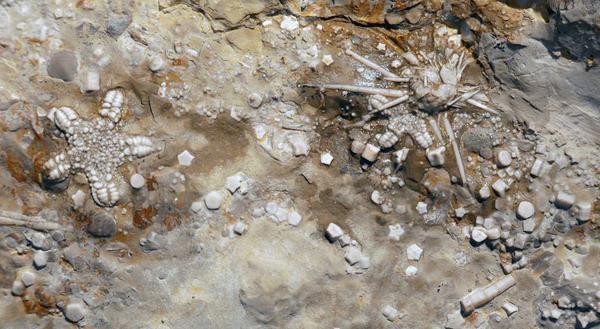Cephalopods
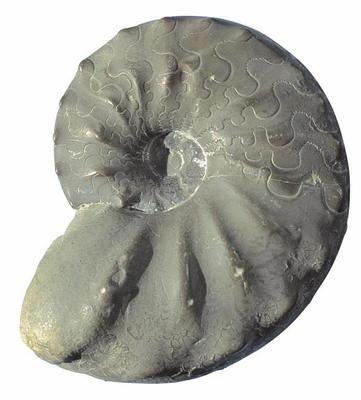
Ceratites are certainly the most common Muschelkalk fossils. The cephalopod order Ceratidida comprises the typical Triassic ammonoids with the simple sinuous suture line. During Triassic times, ammonoids reached their maximum diversity. However, only a few genera immigrated into the Muschelkalk sea, but only Ceratites persisted. Generally, cephalopods are rare in …
Bivalves - Clams and Mussels
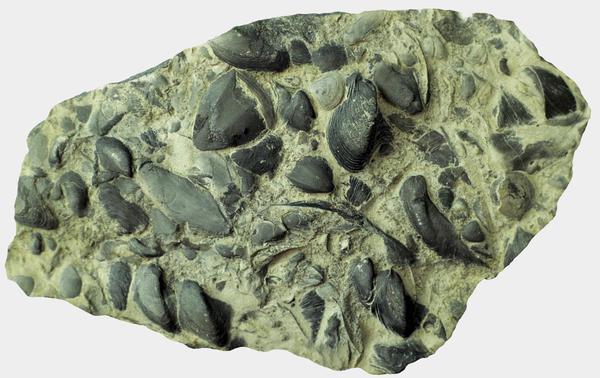
The Muschelkalk, literally ‘bivalve limestone’, owes its name to the abundantly found bivalves. The term was coined as early as 1761 by the Thuringian naturalist Georg Christian Füchsel and is hence one of the earliest stratigraphic terms. The shapes of bivalve shells and their occurrence in certain sediment types provide …
Gastropods and Scaphopods
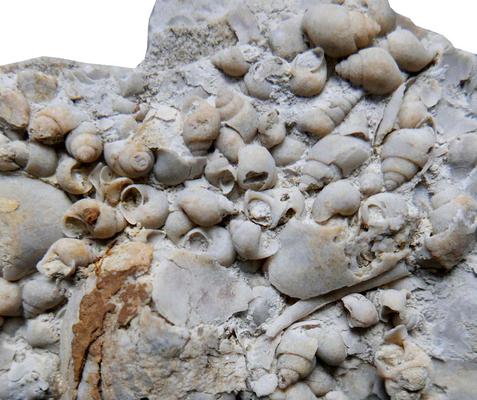
Gastropods and scaphopods have aragonitic shells and are in the Muschelkalk generally preserved as internal moulds that do not show any shell ornamentations. However, if their instable nacreous conchs are replaced by more stable minerals, it becomes clear how diverse gastropod faunas can be. Such ‘Ersatzschalenfaunen‘, with the original aragonitic …
Brachiopods - Tongue Shells and Lamp Shells
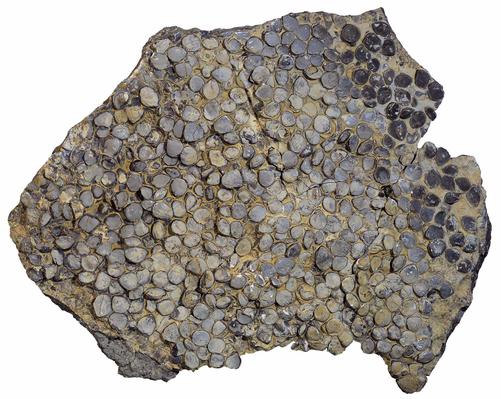
The trivial names are deceiving – their similarity with a Roman oil lamp accounts for the wrong assignment of terebratulid brachiopods to clams and mussels. But brachiopods are no mollusks at all, but bivalved sea creatures with tentacles that belong to a separate phylum. Their ventral and dorsal valves are opened …
Lobsters and other Arthropods
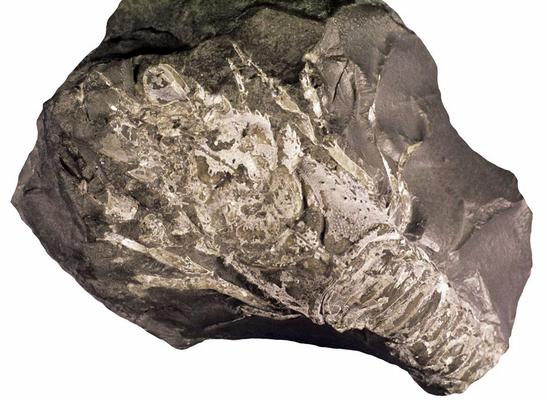
The Muschelkalk is famous for its well preserved lobsters. Like the glypheid genera Pseudopemphix, Aspidogaster, and Litogaster, and the nephropid Lissocardia, the spiny lobster Pemphix has a calcified carapace and is commonly preserved as exuviae. Other than these, actively swimming penaeid shrimps are extremely rare. This is also the case …
Corals and Sponges
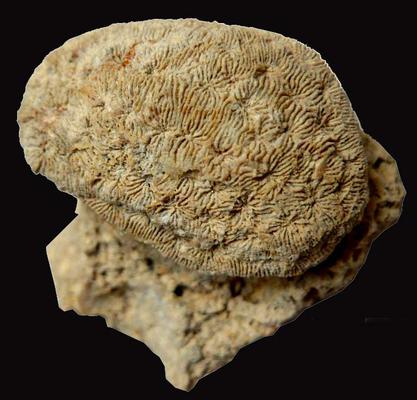
Corals and siliceous sponges are strictly bounded to seawater with normal salt content. Hence, they existed in the Muschelkalk Sea only temporarily under optimum conditions. Due to their symbiosis with green algae, reef building (hermatype) corals need shallow water and pervasive light. In the Muschelkalk Sea this applied to areas …
Trace Fossils
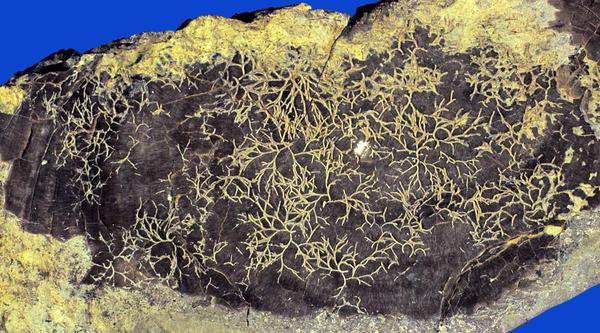
Creeping, Burrowing, Boring
Other than body fossils, trace fossils do not preserve skeletons but traces of organismic activity on or within the sediment. Hence, they document behaviour patterns of extinct animals. According to the basic functions of living, moving, and foraging, the trace fossil types can be classified as: burrows …
Sharks and other Fishes
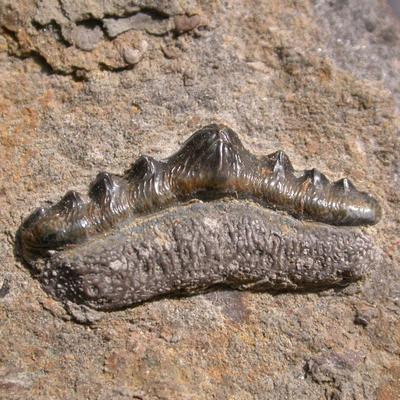
Accummulations of bones, teeth, and scales in countless ‘bone beds‘ provide evidence of the highly diverse fish faunas in the Muschelkalk Sea and the Lower Keuper waters. However, not every species was described from articulated skeletons, but rather from isolated bones, teeth, or scales, which are intermingled in the bone …
Amphibians and Chroniosuchians
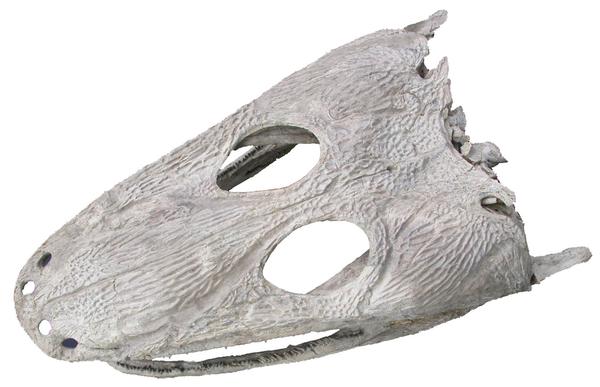
Almost all extant amphibians are small vertebrates, which need water for reproduction. The Triassic waters were inhabited by a great variety of Temnospondylia. This extinct amphibian clade owes its name to the bipartite structure of their vertebrae. Only a few temnospondyls were adapted to saltwater, whereas most genera inhabited freshwater …
Reptiles
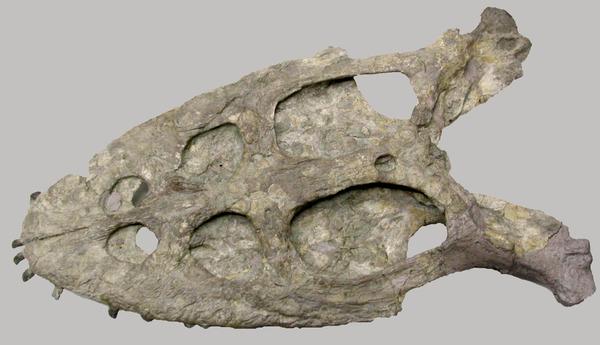
Dominating at Sea and on Land
The Triassic was the age of reptiles. Since the Early Triassic, several reptile clades have re-adapted from land back to the sea and diversified by occupying various ecological niches. Best known are the nothosaurs, some species of which reached up to five metres. With …
Horsetails and Cycads
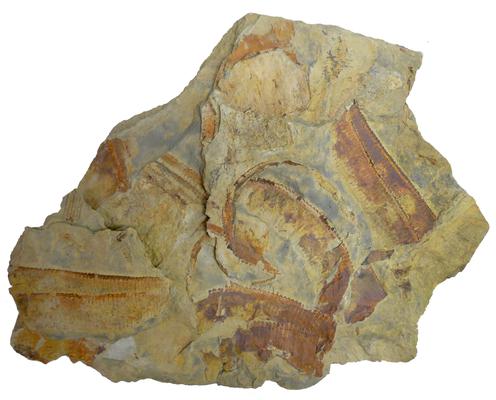
In the swamps and backwaters of the Lettenkeuper braided river systems, a copious vegetation of diverse plants was thriving. Their coalified remains were collected at times of extensive sandstone quarrying around Schwäbisch Hall, Neuenstein, and Würzburg. In the Triassic, the position of Central Europe was subtropical and influenced by seasonally …

